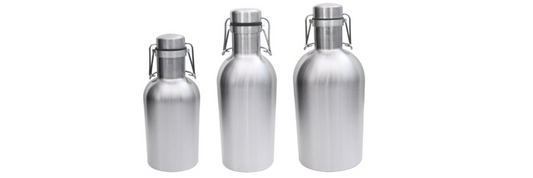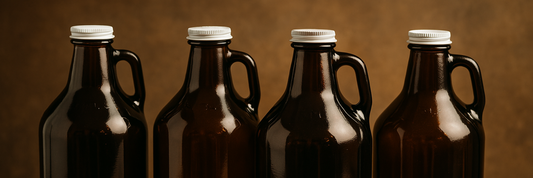Plastic straws are among the most commonly used single-use plastic items worldwide. Lightweight, convenient, and affordable, they have become an integral part of daily life, especially in the food and beverage industry. However, the environmental toll of plastic straws is undeniable, making them a significant contributor to plastic pollution. This article delves into the composition, usage, environmental effects, and compelling reasons why plastic straws should be banned.
What Are Plastic Straws?
Plastic straws are thin tubes made from synthetic materials, primarily polypropylene or polystyrene. They are designed to make drinking liquids more convenient, especially for people on the go. First introduced in the mid-20th century, plastic straws quickly became a staple in restaurants, fast-food chains, and households due to their affordability and practicality.

What Are Plastic Straws Made Of?
Plastic straws are primarily manufactured from two types of plastics:
- Polypropylene (PP): A lightweight, durable plastic derived from petroleum, widely used due to its flexibility and low cost.
- Polystyrene (PS): Another petroleum-based material known for being inexpensive and easy to mold.
While these materials make straws practical and affordable, they are non-biodegradable. This means plastic straws can persist in the environment for hundreds of years, breaking down into microplastics that continue to harm ecosystems.
How Are Plastic Straws Made?
The manufacturing of plastic straws involves several steps:
-
Material Selection: Polypropylene and polystyrene are the most commonly used plastics. These materials are lightweight, durable, and inexpensive to produce.
-
Melting and Extrusion: The plastic pellets are melted and forced through a mold to create the tube shape.
-
Cutting and Shaping: The long plastic tubes are cut into smaller, straw-sized pieces. Some may be bent during this stage to create flexible straws.
-
Packaging and Distribution: Straws are then packaged in bulk or individually wrapped for hygiene purposes.
How Plastic Straws Are Used in Everyday Life
Plastic straws have become an integral part of modern convenience:
- Restaurants and Cafes: Often served by default with cold drinks.
- Fast-Food Outlets: A staple due to their cost-effectiveness and ease of disposal.
- Special Events: Parties and outdoor gatherings frequently rely on single-use straws for their simplicity.
This widespread use comes at a significant environmental cost, highlighting the need for alternative solutions.
Advantages of Plastic Straws
Plastic straws became popular for several reasons:
-
Cost-Effectiveness: They are cheap to produce, making them accessible to businesses and consumers alike.
-
Convenience: Lightweight and portable, they are ideal for takeaway beverages.
-
Durability: Unlike paper or other biodegradable materials, plastic straws do not dissolve or lose their structure in liquids.
-
Variety: Available in multiple colors, sizes, and designs to cater to different drinks and preferences.
Disadvantages of Plastic Straws
While plastic straws offer convenience, they also pose significant environmental challenges:
-
Non-Biodegradability: Plastic straws can take hundreds of years to decompose, contributing to the growing problem of plastic pollution.
-
Ocean Pollution: Millions of plastic straws end up in oceans, where they harm marine life. Turtles, fish, and seabirds often ingest straws, mistaking them for food.
-
Microplastics: Over time, plastic straws break down into tiny particles called microplastics, which contaminate water sources and enter the food chain.

10 Reasons Why Plastic Straws Should Be Banned
- Contributors to Ocean Litter: A leading source of marine pollution.
- Danger to Wildlife: Plastic straws pose a severe threat to aquatic animals through ingestion or entanglement.
- Non-Essential: In most cases, straws are unnecessary for consumption.
- Persistent Waste: They can last for hundreds of years in landfills and oceans.
- Promote Unsustainable Habits: Encourage a disposable culture rather than sustainable practices.
- Toxic to the Environment: Break down into microplastics, which are nearly impossible to remove from natural systems.
- Harmful Chemicals: Some straws may leach chemicals into beverages.
- Aesthetic Pollution: Discarded straws tarnish beaches, parks, and other public spaces.
- Align with Global Efforts: Many countries are already enacting bans or restrictions.
- Eco-Friendly Alternatives Are Accessible: Options like paper, bamboo, and reusable straws offer better environmental outcomes.

FAQs Fact About Plastic Straws
How many plastic straws are used each day?
Over 500 million plastic straws are used daily in the U.S. alone, contributing significantly to plastic waste worldwide.
Why should plastic straws be banned?
Plastic straws harm marine life, pollute ecosystems, and perpetuate unsustainable habits. Banning them encourages the adoption of eco-friendly alternatives.
How can I reduce my use of plastic straws?
Carry a reusable straw, decline straws at restaurants, and support businesses that offer sustainable alternatives.
Conclusion
Plastic straws, while convenient, have significant environmental and health drawbacks. As awareness grows, individuals and organizations are embracing sustainable alternatives. By making small changes, such as switching to reusable straws or advocating for policy changes, we can collectively reduce the impact of plastic straws on our planet.









